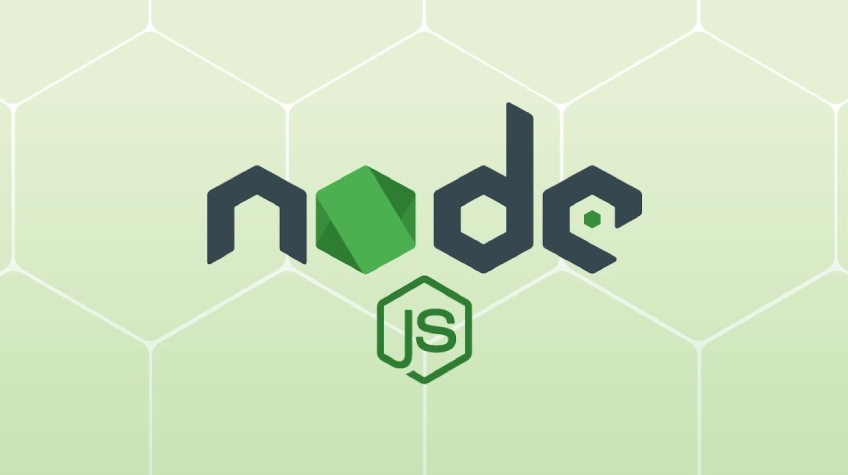Whether you’re opening your first book on programming or you’re an experienced developer who’s navigated through programming language chapters, you’ve likely come across the term “Node.js” in tech narratives.
What is Node.js and why is it so prevalent?
Think of Node.js as the faithful companion in your programming adventures, not just any character in your story, but a fundamental ally that brings your innovative ideas to life outside of conventional web narrative. It’s like discovering a hidden clue that suddenly clicks into everything, allowing you to build apps as responsive and dynamic as the plot twists in a mystery novel.
Node.js has the unique ability to transform the complex into the achievable, making developing applications not only a possibility, but a fun journey.
Read on to learn more about Node.js, where every line of code you write helps unlock the potential of your projects in the wide world of programming.
What Is Node.js And Why Does It Matter?
Node.js is an open source platform used to execute JavaScript code on servers. Without the help of a web browser it can run JavaScript. Node.js can works with Windows, macOS, and Linux operating systems. Originally, the developers of Node.js designed it for real-time, push-based. These architectures include chatbots, notifications, streaming media, and collaboration tools, offering a way to run JavaScript on the server side. On the other hand, JavaScript traditionally made static web pages interactive, adding features such as animations and drop-down menus via “ <script></script> ” tags in HTML documents.
Node.js emerged as a solution to simplify this process, creating a more efficient runtime for JavaScript that extends its capabilities beyond the web browser, and enables custom software development company to create high-performance applications, which can be changed
Node.js, introduced in 2009, addressed JavaScript’s inability to handle multiple concurrent transactions without blocking. It also provides everything needed to run a JavaScript program.
Node.js is applicable in various industries including banking, healthcare, communications, e-commerce , and entertainment. It allows you to create desktop applications, SaaS websites, and mobile applications.
Node.js architecture
Node.js excels at handling large numbers of simultaneous connections and data-intensive tasks efficiently. It is ideal for tasks that involve quickly processing large volumes of data. However, it is less suitable for compute-intensive tasks that require significant CPU resources. In such cases, the single-threaded nature of Node.js can cause delays in responding to other requests.
To better illustrate this concept, imagine a coffee shop. In a multi-process setup, each customer (server request) is served by a different barista (thread). If all the baristas are busy, new customers wait.
In contrast, Node.js is like a coffee shop with a highly efficient barista. This barista handles orders quickly and in a continuous flow, similar to Node.js which handles requests using non-blocking I/O operations . However, a complex request in this setup is like a CPU-intensive task in Node.js. Requires more time from the barista, slowing down service for others. This shows how Node.js, while great for fast, large requests, can struggle with very CPU-intensive tasks.
The difference between single thread and multi-thread is simple: a single-thread architecture can run and scale faster than multi-thread setups. This is what Ryan Dahl had in mind when he created Node.js.
Key Features of Node.js
Scalability
Scalability is the most attractive feature is the ability to split programs horizontally through “child processes.”
The child processes here make Node.js run multiple tasks at once and optimize the power of the server. They have their own resources, which reduces their impact on other processes while handling large tasks or dealing with errors.
This feature allows companies to give different versions of the app to different audiences. Thus allowing them to fulfill customer customization requests.
Written in JavaScript
Another key feature is its JavaScript library. If you’re comfortable working with JavaScript, you’ll probably find Node.js easier. This is why Node.js is a popular choice among software development services .
Additionally, using JavaScript throughout the development process promotes code reliability and reusability. You can share code between client and server, eliminating duplication and ensuring program consistency.
Event Oriented Architecture
In Node.js, everything revolves around events. Events are fired when you interact with your application, such as submitting a form or clicking a button.
These events are small pieces of code that are executed when specific actions occur. The event-oriented feature allows Node.js to handle multiple tasks simultaneously without delays.
Single Thread Language
Node.js processes all requests using a single thread within what is known as the event loop. This is similar to a juggler keeping multiple balls in the air. Instead of focusing on one ball (task) until it is caught (completed), the juggler continues to throw and catch several balls, keeping them all moving smoothly in the loop. Similarly, Node.js does not wait for one task to finish before starting the next. Instead, it efficiently switches between tasks, keeping the workflow continuous and responsive.
This single-threaded approach makes Node.js especially adept at handling input/output activities, which are tasks that involve reading from or writing to external sources such as files and databases.
Imagine a receptionist who quickly handles incoming calls and paperwork. You don’t spend too much time on any particular call or document. Instead, it efficiently manages multiple tasks by quickly switching between them, ensuring a constant flow of work.
This is how Node.js efficiently handles multiple input/output tasks, making it a great choice for applications with a lot of data transactions but less suitable for CPU-intensive tasks.
Fast Data Transmission
Node.js uses the V8 JavaScript engine . Integrating this advanced engine increases speed and enables web applications to handle fast data streams.
In addition, it facilitates the management and processing of large amounts of data. It also ensures that everything works quickly and without delays. This feature makes it an ideal choice for real-time data processing applications.
What Sets Node.js Apart from Other Frameworks?
Programming language used by Node.js and other frameworks is the same but Node.js works differently from other JavaScript frameworks.It uses a unique set of APIs (Application Programming Interface).
Unlike other frameworks, Node.js APIs are designed for server-side development. These include the built-in module called “HTTP”, file system support and child processes.
Additionally, the platform has a comprehensive package ecosystem called npm (Node Package Manager). Custom software development services can access pre-built modules and libraries with over a million packages available.
Glad you are reading this. I’m Yokesh Shankar, the COO at Sparkout Tech, one of the primary founders of a highly creative space. I’m more associated with digital transformation solutions for global issues. Nurturing in Fintech, Supply chain, AR VR solutions, Real estate, and other sectors vitalizing new-age technology, I see this space as a forum to share and seek information. Writing and reading give me more clarity about what I need.
















Leave a Reply